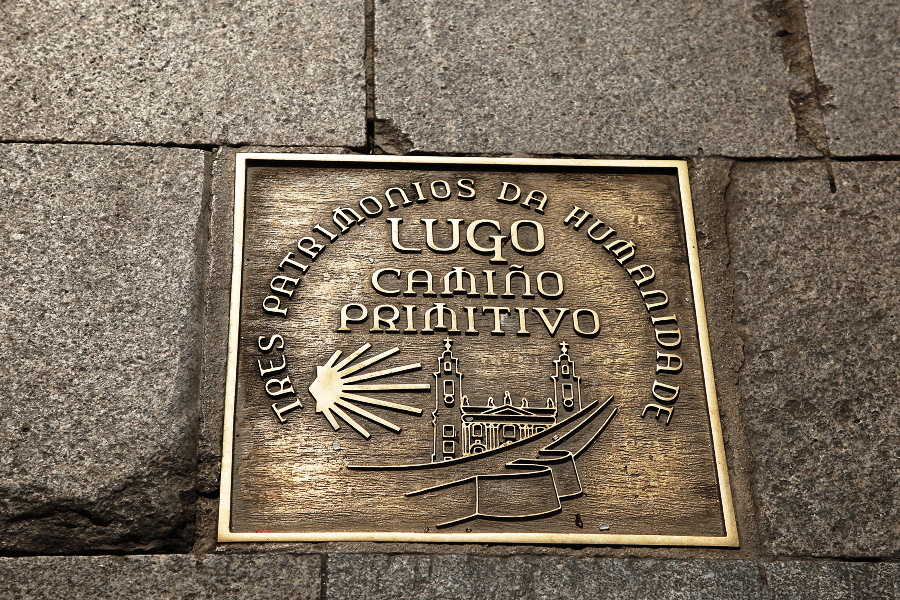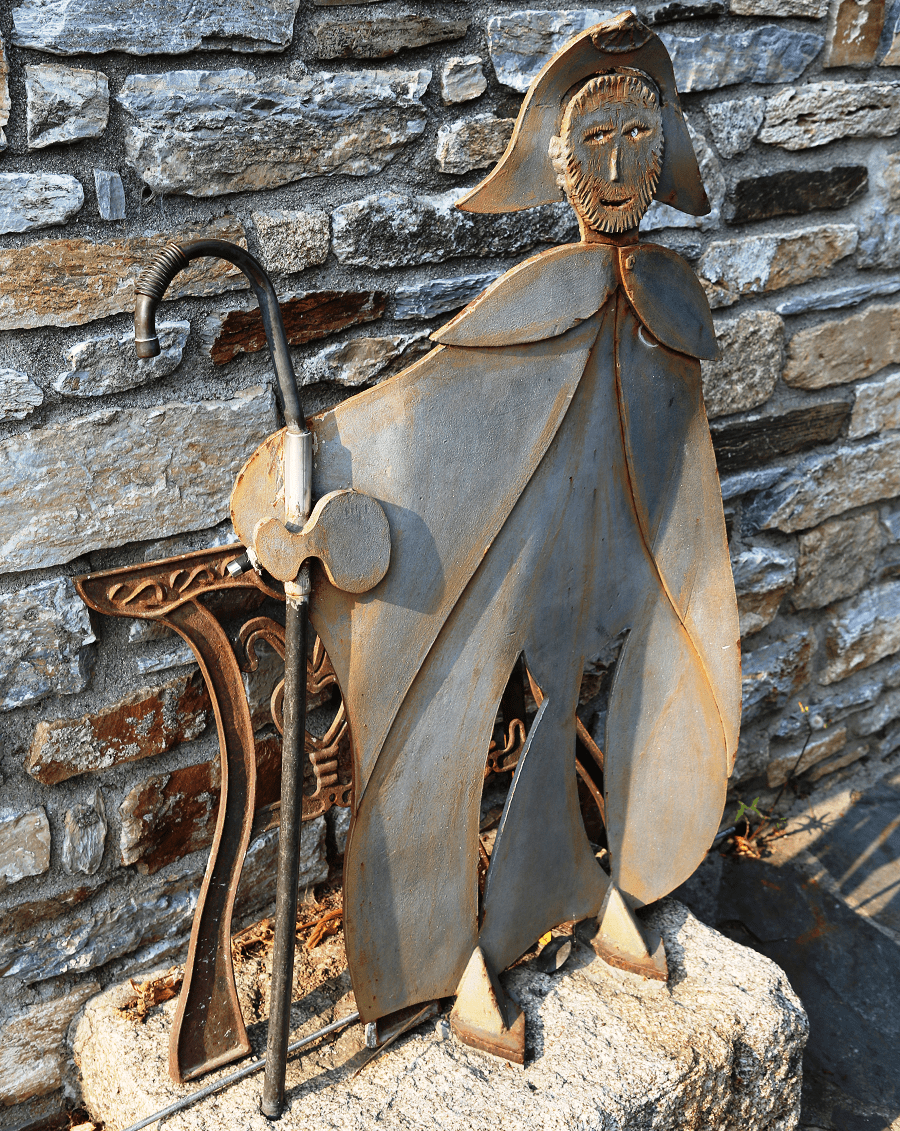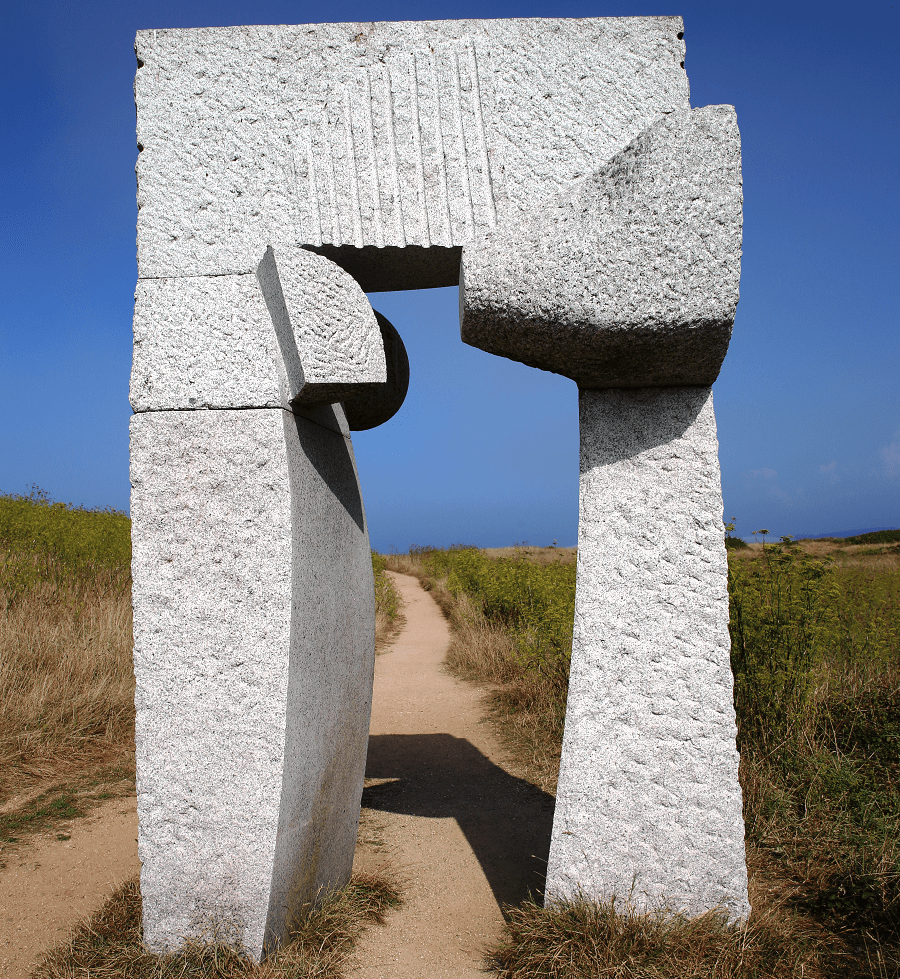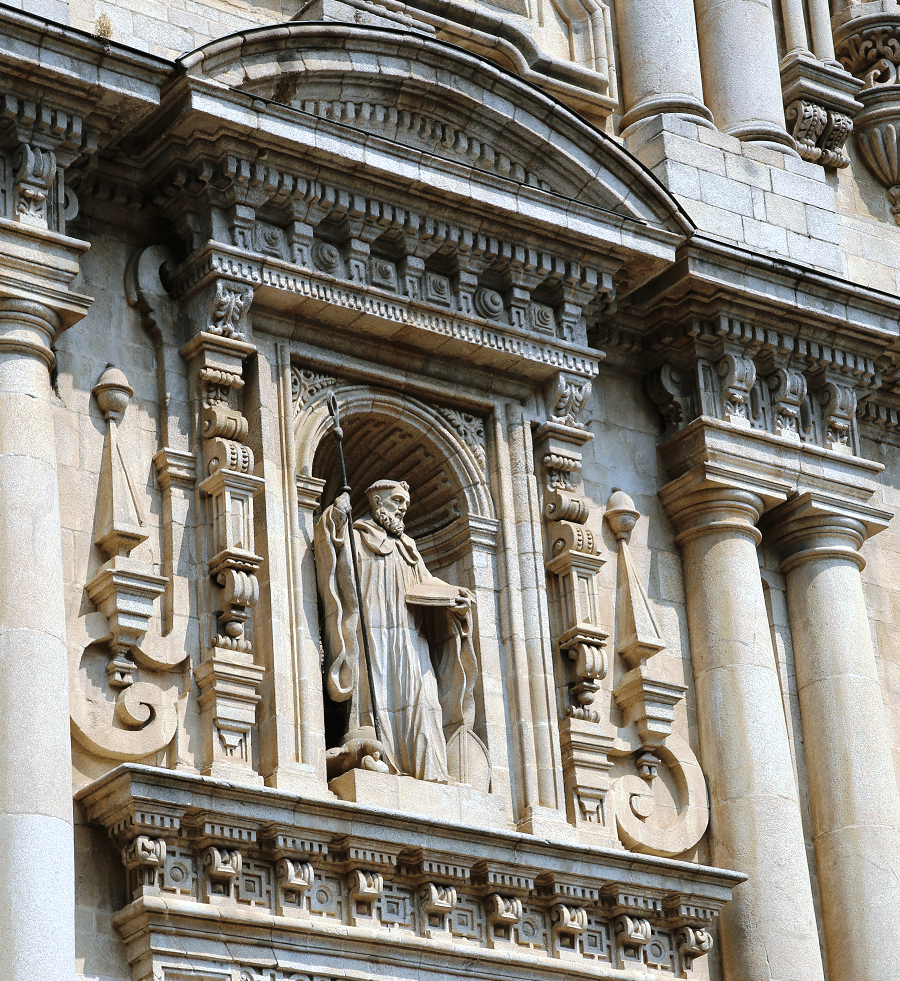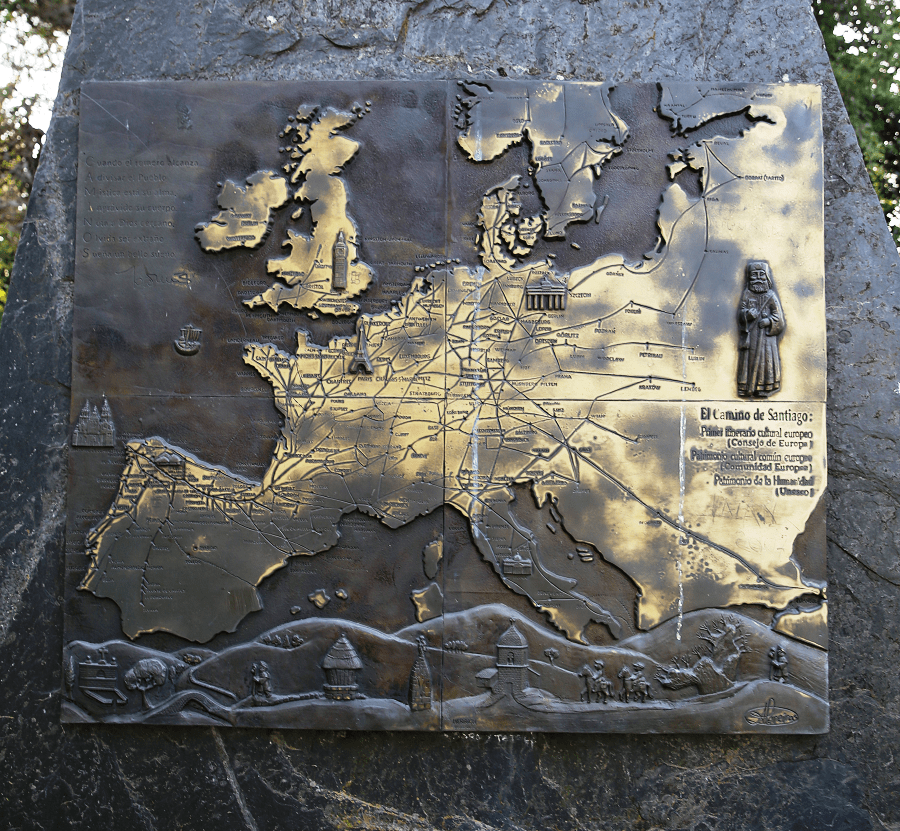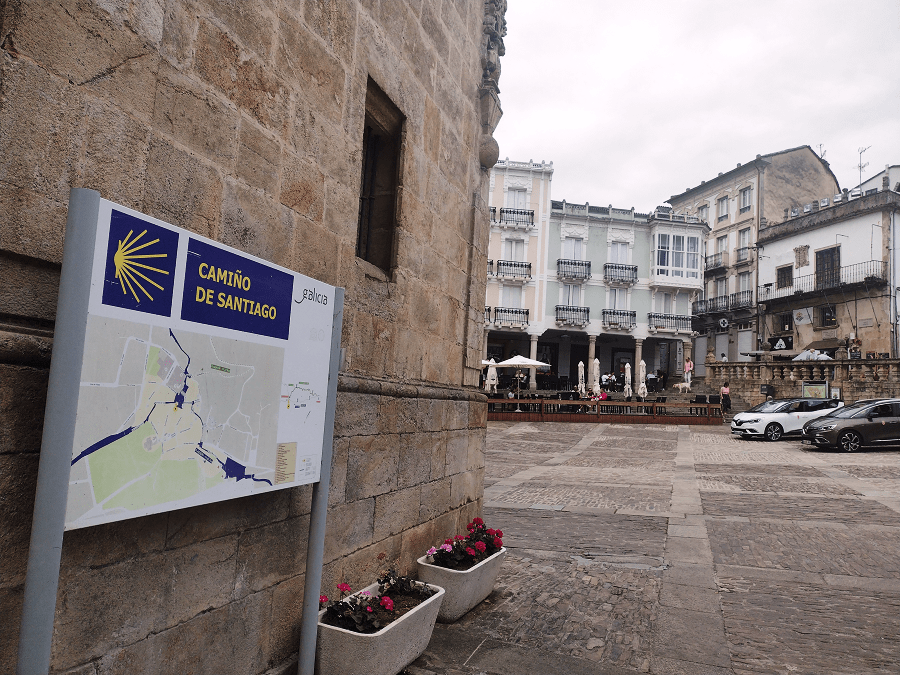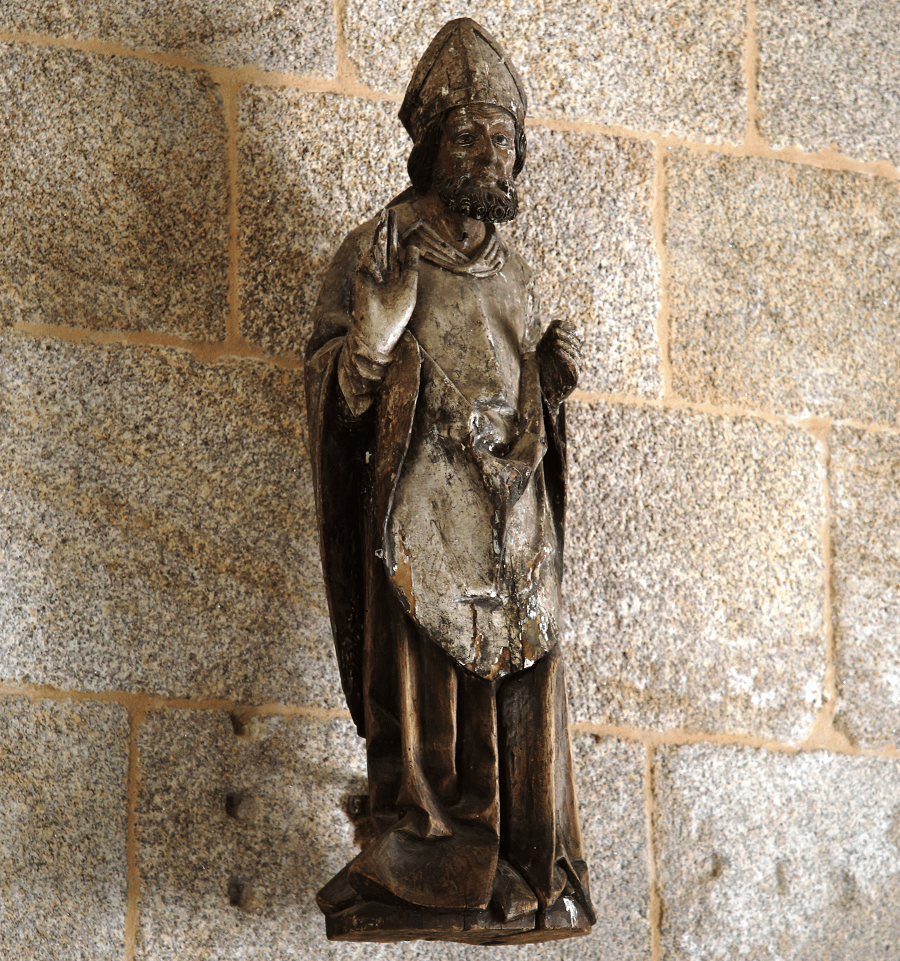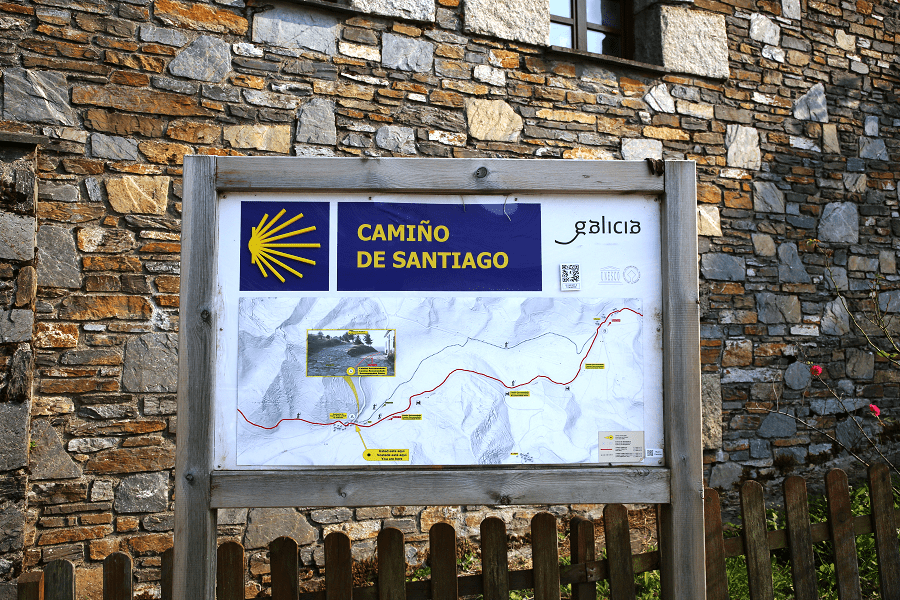The Camino de Santiago, known in English as the Way of St. James, is a network of pilgrims’ ways or pilgrimages leading to the shrine of the apostle Saint James the Great in the cathedral of Santiago de Compostela in Galicia in northwestern Spain, where tradition holds that the remains of the apostle are buried.
The shell and its legend
The scallop shell, often found on the shores in Galicia, has long been the symbol of the Camino de Santiago. Over the centuries the scallop shell has taken on a variety of meanings, metaphorical, practical, and mythical, even if its relevance may have actually derived from the desire of pilgrims to take home a souvenir.
According to Spanish legends, Saint James had spent time preaching the gospel in Spain, but returned to Judaea upon seeing a vision of the Virgin Mary on the bank of the Ebro River. Two versions of the most common myth about the origin of the symbol concern the death of Saint James, who was martyred by beheading in Jerusalem in 44 AD.
Main routes
The Camino de Santiago extends from different countries of Europe, and even North Africa, on its way to Santiago de Compostela and Finisterre.
The Routes of Northern Spain and the French Way (Camino Francés) are the ones listed in the World Heritage List by UNESCO.
The Camino Primitivo, or Original Way, is the oldest route to Santiago de Compostela, first taken in the 9th century and which begins in Oviedo.
The French Way is the GR 65 and the most popular of the routes of the Way of St. James. It runs from Saint-Jean-Pied-de-Port on the French side of the Pyrenees to Roncesvalles on the Spanish side and then another 780 km on to Santiago de Compostela through the major cities of Pamplona, Logroño, Burgos and León. A typical walk on the Camino francés takes at least four weeks, allowing for one or two rest days on the way. Some travel the Camino on bicycle or on horseback.
Paths from the cities of Tours, Vézelay, and Le Puy-en-Velay meet at Saint-Jean-Pied-de-Port. A fourth French route originates in Arles, in Provence, and crosses the French–Spanish frontier at a different point, between the Pyrenees towns of Somport and Canfranc. This fourth route follows the Aragonese Way and joins the French Way at Puente la Reina, south of Pamplona, in Navarre, about 700 kilometres from Santiago de Compostela.
In 2017 roughly 60% of pilgrims traveled to Santiago de Compostela via the French Way according to statistics gathered by the Pilgrim’s Office in Santiago. In 1993, the French Way, along with the Spanish route of the Camino de Santiago was inscribed on the UNESCO World Heritage List for its historical importance in Christianity as a major pilgrimage route and its testimony to the exchange of ideas and cultures across its length.
The Portuguese Way is the name of the Camino de Santiago pilgrimage routes starting in Portugal. It begins at Porto or Lisbon. From Porto, along the Douro River, pilgrims travel north crossing the five main rivers—the Ave, Cávado, Neiva, Lima and Minho—before entering Spain and passing through Pontevedra on the way to Santiago de Compostela.
The Portuguese way is the second most popular route after the French Way and the Portuguese coastal way is the seventh most popular route in Galicia, with 19.9% and 4.41%, respectively. The Portuguese way is 260 km long starting in Porto or 610 km long starting in Lisbon. The way from Porto was historically used by the local populations and by those who arrived in the local ports. In the contemporary period, most pilgrims are foreigners, and of the total number reaching Galicia between January 1 and October 6, 2017, only 4.27% were Portuguese. Roughly 30,000 pilgrims per year walk this path. It is growing in popularity, and 81,000 walked the Portuguese way in 2018.
The Northern Way is an 817 km, five-week coastal route from Basque Country at Irún, near the French border, and follows the northern coastline of Spain to Galicia where it heads inland towards Santiago joining the Camino Francés at Arzúa. This route follows the old Roman road, the Via Agrippa, for some of its way and is part of the Coastal Route. This route was used by Christian pilgrims when Muslim domination had extended northwards and was making travel along the Camino francés dangerous.
The route passes through San Sebastian, Gernika, Bilbao, and Oviedo. It is less populated, lesser known and generally more difficult hiking. Shelters are 20 to 35 kilometers apart, rather than there being hostels or monasteries every four to ten kilometers as on the Camino Francés.
The Aragonese Way is a route of the Way of St. James beginning at the French-Spanish border at the pass of Somport and joining the French Way (or Camino Francés) at Puente la Reina in Navarre. It is the continuation of the Arles Way which begins in Arles and crosses the Pyrenees into Spain at Somport.
The route covers approximately 170 km and travels through a variety of landscapes, ranging from mountainous to gently rolling and sometimes nearly flat river valleys. For the most part it follows the River Aragon.
The English Way is one of the paths of the Camino de Santiago. It begins in the Galician port cities of Ferrol (118 km) or A Coruña (75 km) and runs south to Santiago de Compostela.
The Via de La Plata Way starts in Seville from where it goes north to Zamora via Zafra, Cáceres and Salamanca. It is much less frequented than the French Way or even the Northern Way – in 2019, of the 213,000 pilgrims being granted the compostela in Santiago, 4.2% traveled on the Via de la Plata, compared to 70.3% on the Camino Francés. After Zamora there are three options. The first route, or Camino Sanabrés heads west and reaches Santiago via Ourense. Another route continues north to Astorga, from where pilgrims can continue west along the Camino Francés to Santiago. A third, seldom traveled route, crosses into Portugal and passes through Bragança, rejoining the Camino Sanabrés near Ourense.
The Camino Mozárabe route, from Almeria, Granada or Málaga, passes through Córdoba and later joins up with the Via de La Plata at Mérida.
The Camino del Ebro starts in Catalonia at Sant Jaume d’Enveja near Deltebre, where Saint James is traditionally supposed to have left Spain on his way home to martyrdom in Palestine, and follows the River Ebro past Tortosa and Zaragoza, joining the Camino Francés at Logroño.
Camino de Santiago de Soria, known as the Camino Castellano-Aragonés, this camino leaves the Camino del Ebro at Gallur and goes past Soria to Almonacid de Zorita, where it joins the Camino de la Lana.
The Camino de la Lana (sometimes Ruta de la Lana), or wool road, leaves Alicante and heads mainly northwards for 670 km, joining the Camino Francés at Burgos.
The Camino de Levante starts at Valencia and crosses Castille-La Mancha, passing through towns and cities including Toledo, El Toboso, Ávila and Medina del Campo, joining the Via de la Plata at Zamora.
The Camino del Sureste starts at Alicante and follows a broadly similar route as the Camino del Levante from Albacete until Medina del Campo, where the routes bifurcate, with the Sureste heading northwards to Tordesillas, joining the Via de la Plata at Benavente, while the Levante goes westwards to Toro and Zamora.
Accommodation and hotels
In Spain, France, and Portugal, pilgrim’s hostels with beds in dormitories provide overnight accommodation for pilgrims who hold a credencial. In Spain this type of accommodation is called a refugio or albergue, both of which are similar to youth hostels or hostelries in the French system of gîtes d’étape.
Hostels may be run by a local parish, the local council, private owners, or pilgrims’ associations. Occasionally, these refugios are located in monasteries, such as the one in the Monastery of San Xulián de Samos that is run by monks, and the one in Santiago de Compostela.
The final hostel on the route is the famous Hostal de los Reyes Católicos, which lies in the Plaza do Obradoiro across the Cathedral. It was originally constructed as hospice and hospital for pilgrims by Queen Isabella I of Castile and King Ferdinand II of Aragon, the Catholic Monarchs. Today it is a luxury 5-star Parador hotel, which still provides services to a limited number of pilgrims.



